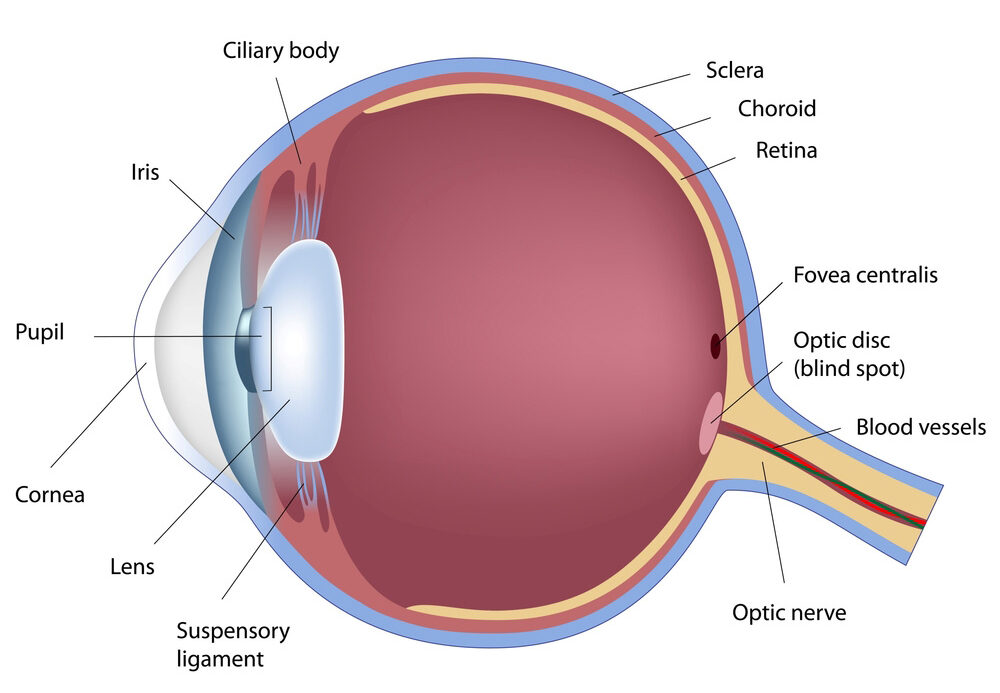A good way to understand how your eyes work is to think of the eye like a camera. The white part of your eye is called the sclera. In its center is the cornea, the transparent part of the eye that covers the iris or colored part of your eye. The iris operates like a camera shutter by controlling how much light can enter the eye.
Located behind the iris is the lens of your eye. Your lens is suspended by fibers that tighten or loosen to focus rays of light from objects outside the eye onto the retina, located at the back of the eye. Think of the retina like film in a camera.
The vitreous makes up the main mass of your eye. It fills the space between the lens and the retina, and is filled with a clear, jelly-like fluid. Within the layers of the retina are special cells that perceive light and color. The images received by the retina are conveyed to the brain by the optic nerve, allowing us to see objects.

